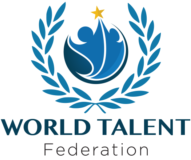Talent Identification
Talent Identification
Talent Identification ( also known as “Spotting”) is the process of recognizing uniqueabilities of people “on first sight”. Yao Ming is the undoubtedly the most famous basketball player from China.
That China could produce a player like him should come as no surprise. Under the country’s basketball system, officials scout for talent among children as young as 9 years old using primarily one criterion – height. That how’s Yao Ming, who stood at 1.7 m at the age of 9, was discovered. As one Chinese fan noted, “If height were the determining factor, we would be the best team in the world.”
Unfortunately, height alone is not a predictor of future success on the court – speed and skill are equally important. To compound the situation, budding young players who are not selected are completely left out of the developmental system. With no formal training and coaching, they have little hope of ever being discovered or reaching their full playing potential. Albert Einstein’s teacher said to his father: “It doesn’t matter what he does, he will never amount to anything.” Soichiro Honda, rejected by Toyota during a job interview, later founded the famous motor company bearing his name. A young Warren Buffet failed to get into the University of his dreams after his application was rejected at a Harvard admissions interview.
History is rife with examples of great men whose talent initially went unrecognised. If you have been in the business of recruiting, you may well have personal examples of people you “rejected” in the past who have gone on to very successful careers with other organisations. Talent Spotting is almost like crystal ball gazing. We sometimes have to assess the leadership potential of people who may not have even started their careers. With very little track record to go on, how do you spot the leadership X-factor?
Unfortunately, recruiters sometimes give too much credence to things like academic results as well as how well the person “carries himself”. While these qualities are important, they alone may not be the best predictors of future success as leaders. If we go on the basis that leadership is part inborn talent and part acquired skill, then the key to spotting future leaders among early career talents is to pay more attention to the less learnable “inborn” qualities of the person.
The rationale behind this thinking is that they have their whole careers ahead of them for you to develop them in the more coachable leadership skills. In this regard, we believe there are three characteristics that you should look out for. All in all Talent Identification or Spotting uses the naked eye and may thus not conclusively tell you the true talent of a person. There needs more professional and Scientific approach …and… That is the Professional and Scientific Gift and Talent Screening.
The World Talent Federation recognizes Talent Identification or Spotting by school teachers, college or university educators or non-verbal Talent Scouts as they are an important access points to Professional Scientific Talent Screening.
 �
�
14 June 2016
Team Novo Nordisk, a global team of athletes with diabetes, spearheaded by the world’s first all-diabetes professional cycling team, kicks off the first of two talent identification camps today in Athens, Ga. The talent identification camps serve as a key recruiting tool for Team Novo Nordisk to develop athletes for the men’s professional squad and help fulfill the team’s ultimate goal of racing in the Tour de France by 2021.
For more information on Talent Based Learning Click Here
